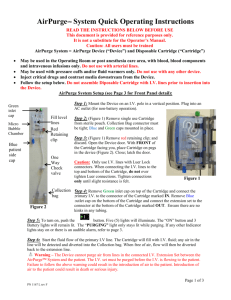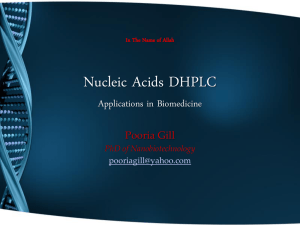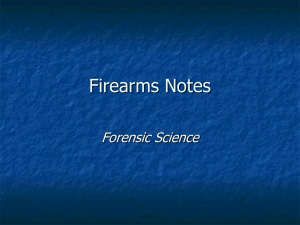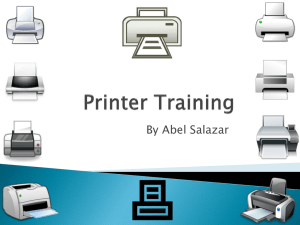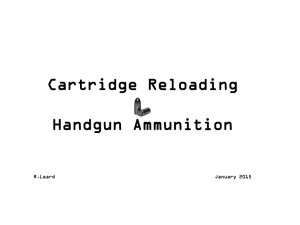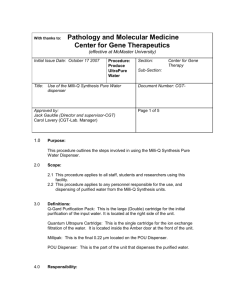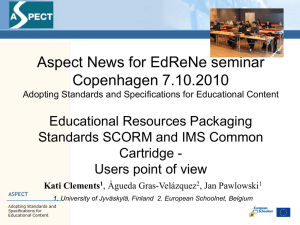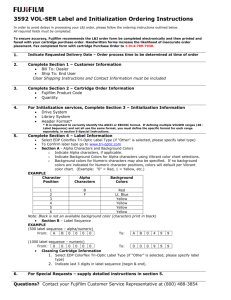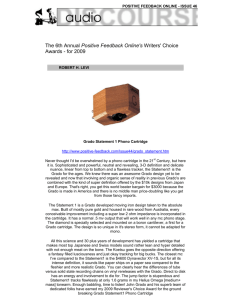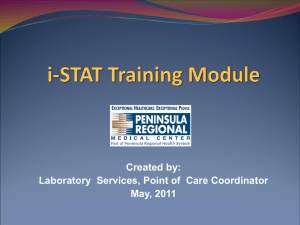The Cartridge
advertisement
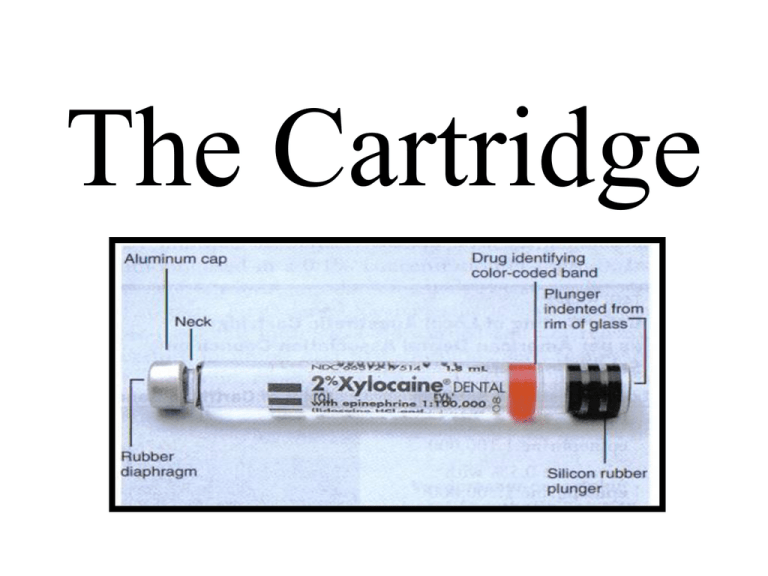
The Cartridge Components of the Cartridge The 1.8 ml dental cartridge consists of four parts: 1) Cylindrical glass tube 2) Stopper (Plunger, Bung) 3) Aluminum Cap 4) Diaphragm Carpule = registered trade name for the dental cartridge introduced by Cooke-Waite laboratories in 1920 Parts of the Cartridge -Rubber stopper should be lightly indented -Flush or extruded stoppers: don’t use -Aluminum cap holds the diaphragm in position -Diaphragm is latex rubber through which the needle penetrates the cartridge (no allergies ever reported) -Liquid can diffuse through the diaphragm and contaminate the local anesthetic solution (alcohol common culprit) -Mylar plastic label surrounds glass with content information and color coded band to identify the anesthetic Composition of Local Anesthetic Cartridge What is in the Cartridge? -Local Anesthetic: provides anesthesia; resists heat -Sodium Chloride: produces isotonicity with body tissue -Sterile Water: provides volume only -Vasopressor: increases safety, duration and depth of anesthetic -Sodium (meta) Bisulfite: antioxidant (preservative) -Methylparaben: bacteriostatic agent and antioxidant -only found in multi-dose drugs, ointments, creams -bacteriostatic, fungistatic and antioxidant -removed due to single use and paraben allergies Care and Handling -local anesthetic drug is stable and can be sterilized, heated, autoclaved, or boiled without being broken down -problem is that the diaphragm and vasopressor is heat labile and can easily be broken down, so cartridges should not be autoclaved -“blister packs” should be stored at room temperature and in the dark -bacterial cultures taken off newly opened “blister packs” produce no bacterial growth when cultured -cartridges are ready to be used when removed from the package there is no need to rub the diaphragm with alcohol -cartridges should not be permitted to soak in alcohol or other sterilizing solutions because the diaphragm will allow diffusion Cartridge Warmers -cartridge warmers are not necessary; the patient cannot discern between warmed and room temperature local anesthetic -patients do not complain of the local anesthetic solution feeling cold upon injection -local anesthetics that are warmed too much, i.e., > 80 F will be described as too hot or burning upon injection -local anesthetic warmers are deceptive if they claim that the injection will be less painful if the anesthetic is warmed Problems Bubble In The Cartridge: 1-2 mm bubble can be found in the cartridge which is nitrogen gas that is inserted into the cartridge when it is sealed to keep oxygen out; avoids oxygen oxidizing the vasopressor Extruded Stopper: liquid was frozen at some point leading to extrusion sterile environment of the solution can no longer be guaranteed; it only takes one day for alcohol to diffuse through the diaphragm; alcohol is neurolytic and can cause extended lengths of parasthesia; do not soak cartridges in alcohol Burning On Injection 1) Normal response to the pH of the drug 2) Cartridge contains sterilizing solution 3) Overheated cartridge (local anesthetic warmer) 4) Cartridge containing a vasopressor (decreased pH) 5) Vasopressor decreases the pH from 5.5 (plain) to 3.3 – 4.0 6) Sodium Bisulfite Sodium Bisulfate (much more acidic) 7) -ite -ate occurs by oxidation after local anesthetic expiration -with the addition of silicone as a lubricant around the stopper instead of paraffin this is not a problem anymore Cracked Cartridge Glass -there is no need to hit the thumb ring with excessive force when engaging the stopper with the harpoon -controlled pressure with the palm of the hand will provide adequate engagement -some have a tendency to engage the harpoon too aggressively which is a bad habit that leads to cracked glass cartridges Additional Armamentarium 1) Topical Antiseptic: betadine or thimerosal; 8% of Dentists use it and is considered optional; eliminates post-injection infections 2) Topical Anesthetic: disguises the initial introduction of the needle into the tissues when applied for a minimum of 1 minute; if left for 2 to 3 minutes, profound topical anesthesia is achieved; studies have shown that less than 10 seconds does not provide any more anesthesia than placebo References Malamed, Stanley: Handbook of Local Anesthesia. 5th Edition. Mosby. 2004
